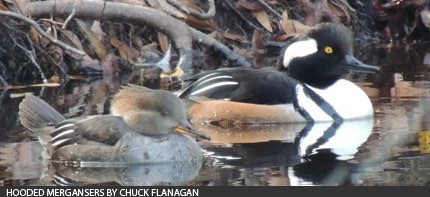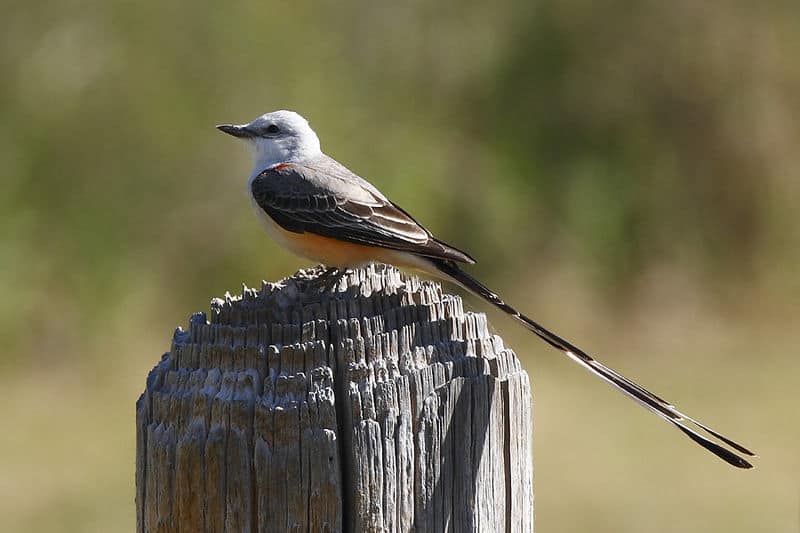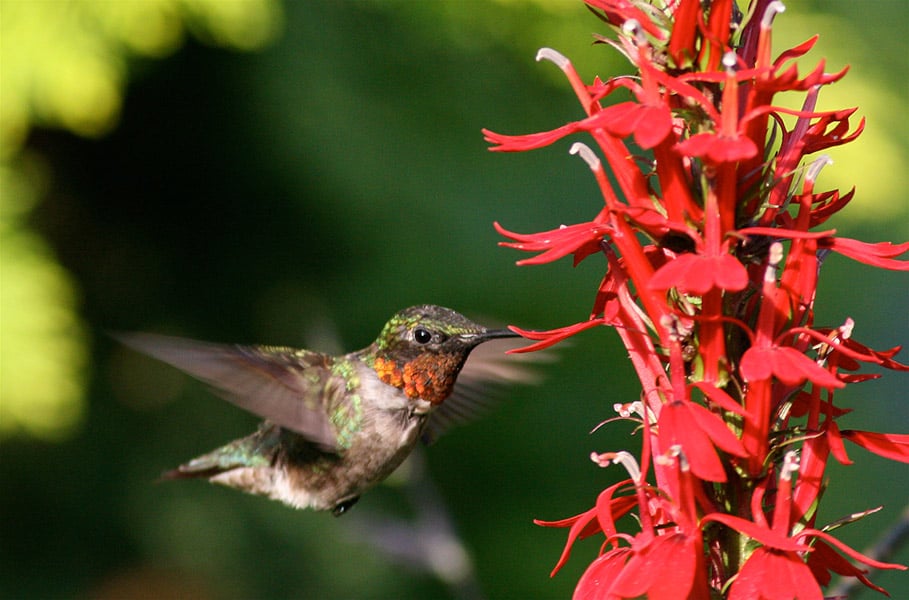Winter Waterfowling on North Carolina’s Coastal Plain
When autumn slowly turns into winter, a huge number of waterfowl head south along the Atlantic flyway seeking sanctuary from the cold and open waters upon which to feed. A prime destination for the geese, ducks, and swans is the pocosin habitat of the North Carolina coastal plain.
The habitat on which they overwinter is a remnant of what was once a vast network of swamps, bogs, and shallow lakes known as the “pocosin.” Given the name by Native Americans, which means “swamp on the hill,” this huge swampy area stretched from present-day southeastern Virginia southward into the Florida panhandle. It encompassed most of the Atlantic coastal plain, interspersed with maritime forest and dunes.
The pocosin is a uniquely eastern phenomenon and can be readily identified by many shallow and often oval-shaped lakes, thick shoulder-high scrub brush that is nearly impenetrable, and stands of stunted pond pines and deciduous trees. This evergreen wetland hosts a great variety of marsh plantlife. When you first visit the pocosin, the aspect you’ll notice most is the flatness of the coastal plain. The pocosin floor has varying depths of spongy peat and is one of the largest wetland areas in the central Atlantic states.
Arriving waterfowl find ideal conditions to overwinter on 10 national wildlife refuges throughout North Carolina’s northern coastal plain and barrier islands. In all, bird watchers can easily find more than 20 species of ducks as well as thousands of tundra swans and snow geese during a typical moderate winter. Besides waterfowl, you can expect to find other species along the Outer Banks such as shorebirds, black-crowned night-herons, horned grebes, red-throated and common loons, sea ducks, and seabirds.
Many of the national wildlife refuges on North Carolina’s coastal plain have limited access because of their undeveloped wilderness and require watercraft for exploration. Luckily, bird watchers can spend their time at just two of the refuges for the best opportunity to find most migratory waterfowl and other winter residents present during the winter months: Pea Island NWR—a part of the Cape Hatteras National Seashore—and Mattamuskeet NWR west of Pea Island across Pamlico Sound.
Pea Island National Wildlife Refuge
Pea Island is located along the Outer Banks, a sliver of North Carolina’s barrier islands, south of the town of Nags Head. Either Nags Head or the town of Manteo is a good home base for a visit to the refuge and national seashore. You’ll need a spotting scope to maximize identification of distant species.
Birding in earnest begins at the south end of Bodie Island, about two miles south of the junction of highways 158 and 64 in Nags Head. Turn into the entrance to the Bodie Island lighthouse and drive to the parking lot. A short trail behind the lighthouse leads to a boardwalk and observation deck to view the waterfowl along the shores of Pamlico Sound. Along with the ducks, geese, and swans, you’re apt to find white ibis, Forster’s terns, and greater black-backed gulls sharing sandbars with flocks of peeps and other waders.
To find land birds at Bodie Island, from the parking lot look for a track behind a fence along the western edge of the parking lot. Follow the track and bear left at a small spillway into the pine forest. The path meanders alongside a narrow ditch where you’re apt to find yellow-rumped warblers, common yellowthroats, brown thrashers, swamp sparrows, and black-crowned night-herons. It’s not unusual to find peregrine falcons and sharp-shinned hawks hunting over the marshland and scrub pines. You’ll pass several ponds dotted with waterfowl. The linear path ends at Highway 12 after two-thirds of a mile.
You reach Pea Island NWR when you head south from Bodie Island lighthouse on Highway 12 and cross the Oregon Inlet bridge. The refuge checklist includes 265 regularly occurring species and 50 accidentals. Thousands of snow geese and tundra swans and roughly 25 species of ducks winter on the refuge. You’re likely to find northern shovelers, lesser scaup, buffleheads, hooded and red-breasted mergansers, ruddies, canvasbacks, and redheads.
At the visitor center, a few minutes south, take the boardwalk to North Pond where you can bird along the southern and western berms. An observation deck will give you excellent views of waterfowl on South Pond (closed to the public) as well as North Pond. The visitor center staff keeps a list of recent bird sightings. In the winter, North Pond is usually filled with clusters of ducks and swans that slowly forage among the many small islands in the pond.
Be sure to stop along the roadside access points to ocean beaches to look for shorebirds, loons, and sea ducks bobbing in the surf, such as long-tailed ducks, white-winged and surf scoters, common goldeneye, and greater scaup.
It’s impossible to convey the richness of birding at Pea Island NWR with its huge quantity and variety of birdlife. Its well-deserved reputation as a premier winter birding hotspot on the Atlantic Coast draws many bird watchers from across the country and from abroad.
If you visit during November, you’ll surely want to attend the Wings Over Water birding festival, the premier wildlife festival in the mid-Atlantic. The six-day event is headquartered in Manteo and covers the length of the Outer Banks, extending into the Alligator River, Pocosin Lakes, Mattamuskeet, and Swanquarter National Wildlife Refuges. Guided field trips will take you to all of the best hotspots on the Outer Banks and eastern coastal plain. You can get information about field trips and registration forms at the festival’s website, wingsoverwater.org.
Mattamuskeet National Wildlife Refuge
Inland from the barrier islands, you reach Mattamuskeet by following Highway 64 west out of Manteo and Highway 264 south through the Alligator River NWR, a preserve that is an excellent example of pocosin habit. Mattamuskeet NWR curls around a large shallow lake, with many impoundments and pools to explore. On a wintry morning, slowly ambling among the oval pools can be downright magical.
As you venture along the pathways between the impoundments, the sentinel geese who see you first thrust their heads into the air and honk at a low pitch. Then, as you approach closer, the honks become more strident. Flocks of ducks, which spook the easiest, fly out toward the lake with rapid wingbeats and become dots in the sky.
At some point along the pathway, you cross their comfort zone and 20,000 snow geese take to the air, floating upward, whirling around in small spirals that become larger and larger, until the sky is filled with white, black-tipped wings and deafening high-pitched screams.
The tundra swans are now alarmed. Outstretched necks are thrust far ahead of their tense bodies. The most timid bird bolts from the surface, and hundreds follow suit. Slap—slap—slap—slap, the wings and feet are in unison as large, graceful birds pound along the water’s surface, struggling to get airborne. You wonder if they’ll make it, as the majestic birds pick up speed and gradually fold their legs backward and become horizontal white arrows in flight.
You soon pass beyond their territory. The ducks have flown in a wide arc and return to settle onto the impoundment again. Thousands of snow geese, too, begin to slowly flutter downward in crisscrossing spirals. They noisily rearrange themselves in the marsh to feed again, only a few hundred yards from where they started. In pairs, tundra swans glide to the water’s surface and splash down. Early morning calm returns following a ritual played out endlessly across the lakes and impoundments of the pocosin.
Mattamuskeet Lake is tucked away in a sparsely populated corner of North Carolina roughly 170 miles due east of Raleigh. Starting around mid-September, hundreds of thousands of waterfowl pour into the Mattamuskeet waters. They stay until late February, and most are gone by early March.
The refuge is actively managed to attract Canada and snow geese, tundra swans, and more than 20 species of ducks. Along the southern and eastern edge of the refuge, a number of impoundments attract birds looking for shelter from the brisk winter winds.
Although ducks and geese usually remain in the impoundments, the swans more often leave in the early morning to feed in neighboring cultivated fields. There they find a smorgasbord of tall grasses and crops managed for their benefit. The birds’ return in the late afternoon, as the winter sun begins to set, is a picture to remember forever.
When you first visit Mattamuskeet, you’ll want to take a leisurely jaunt around the lake to get your bearings.
A visit to the Mattamuskeet NWR headquarters is the best place to start, where the staff maintains a current sightings list and you can find an indispensable map of the refuge.
The refuge headquarters building is located about three-quarters of a mile from the entrance. You’ll skirt a large impoundment, where there’s usually a good selection of duck and geese with tundra swans often close to the water’s edge. The headquarters building will be on your left just before reaching a parking area. Looming into sight with a prominent tower is the Lake Mattamuskeet Lodge, a local landmark with an extraordinary history.
Birding treks start at the lodge, and you’ll want to bird along the wildlife drive that leads east alongside a small canal. The two-mile-long wooded drive along the lakeshore is open to cars, and there are several small parking areas and access points to the lake. Turning around can be tricky at some parking areas, especially when the roadway is wet. The views of the waterfowl on the lake make the drive worth any inconvenience. You’ll see plenty of tundra swans and rafts of ducks feeding on the grass near shore.
Walking the wildlife drive will also bring good birding. Just across from the lodge, paths lead into the impoundments from the roadway, and the hoots and shrieks of geese and swans feeding in the tall grasses will soon surround you. A wide swing through the impoundments leads back to the scenic drive.
If you continue along the wooded lane, look for white-breasted and brown-headed nuthatches, brown creepers, pine warblers, belted kingfishers, and brush-loving birds such as eastern towhees, song and white-throated sparrows, northern cardinals, dark-eyed juncos, and gray catbirds.
Lake Landing Canal is probably the refuge showcase. To find the main eastern impoundments drive east from Mattamuskeet Lodge on US 264 roughly seven miles to the entrance. Turn left onto a gravel road, go an eighth of a mile along the narrow canal. It’s possible to walk throughout the impoundments in several loops.
An especially good loop is to Waypoppin Canal, just over two miles one-way from the Lake Landing parking lot. You’re apt to see waterfowl here at very close range. Look for great blue herons, pied-billed grebes, double-crested cormorants, ruddy and ring-necked ducks, and possibly green herons and night-herons.
Loop back to the parking lot by turning left (west) from the canal and following the pathways along the berms through the impoundments. You’re likely to see red-tailed hawks and northern harriers overhead, as well as bald eagles, whose numbers have risen sharply during the past few years.
Rose Bay Canal, at the southwestern corner of Lake Mattamuskeet off Piney Woods Road, is also a good place to get close to waterfowl. You’ll need to watch carefully for the entrance to the canal from Piney Woods Road. From the parking lot at Rose Bay, walk along the canal (roughly 1 – 1.5 miles) to reach impoundments around which you can make several loops before returning to the parking lot. The second and third impoundments often are the most productive.
The two refuges have complimentary species and terrain. Mattamuskeet has more trails and room to roam among more than a dozen impoundments, and seems to have more songbird species during the winter. Pea Island is more compact and takes less time to explore. Together, the refuges will give you wonderful waterfowling and a taste of both pocosin and barrier island habitats.




